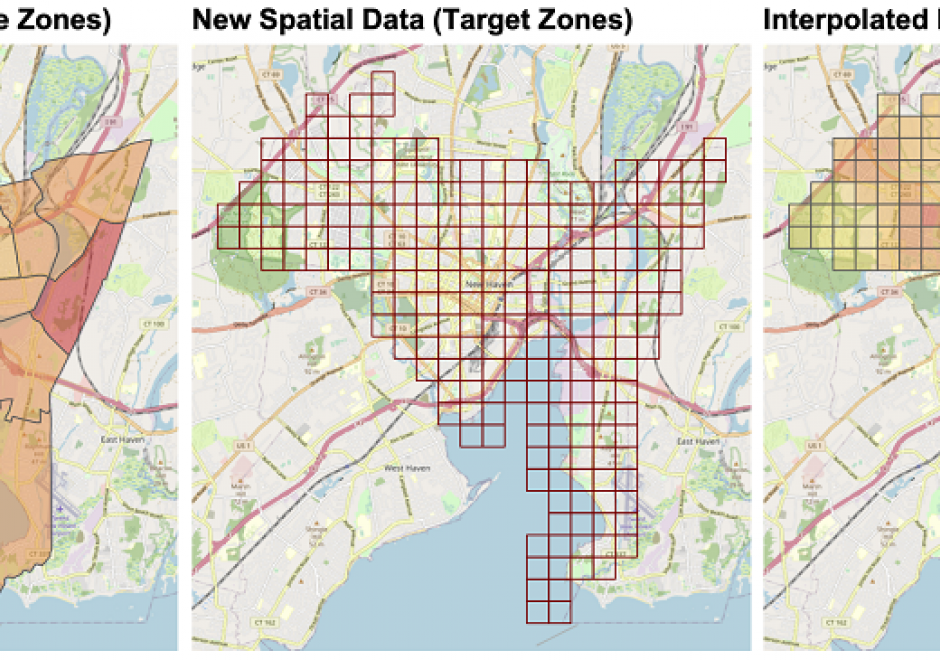AM-40 - Areal Interpolation

Areal interpolation is the process of transforming spatial data from source zones with known values or attributes to target zones with unknown attributes. It generates estimates of source zone attributes over target zone areas. It aligns areal spatial data attributes over a single spatial framework (target zones) to overcome differences in areal reporting units due to historical boundary changes of reporting areas, integrating data from domains with different reporting conventions or in situations when spatially detailed information is not available. Fundamentally, it requires assumptions about how the target zone attribute relates to the source zones. Areal interpolation approaches can be grouped into two broad categories: methods that link target and source zones by their spatial properties (area to point, pycnophylactic and areal weighed interpolation) and methods that use ancillary or auxiliary information to control, inform, guide, and constrain the interpolation process (dasymetric, statistical, streetweighted and point-based interpolation). Additionally, there are new opportunities to use novel data sources to inform areal interpolation arising from the many new forms of spatial data supported by ubiquitous web- and GPS-enabled technologies including social media, PoI check-ins, spatial data portals (e.g for crime, house sales, microblogging sites) and collaborative mapping activities (e.g. OpenStreetMap).


GS-27 - GIS&T for Equity and Social Justice
A geographic information system (GIS) can be used effectively for activities, programs, and analyses focused on equity and social justice (ESJ). Many types of inequities exist in society, but race and space are key predictors of inequity. A key concept of social justice is that any person born into society, no matter where they were born or live, will have an equitable opportunity to achieve successful life outcomes and to thrive. Geographic information science and its technologies (GIS&T) provide powerful tools to analyze equity and social justice issues and help government agencies apply an equity lens to every aspect of their administration. Given the reliance on spatial data to represent and analyze matters of ESJ, the use of these tools is necessary, logical, and appropriate. Some types of analyses and mapping commonly used with ESJ programs require careful attention to how data are combined and represented, risking misleading or false conclusions otherwise. Such outcomes could build mistrust when trust is most needed. A GIS-supported lifecycle for ESJ is presented that includes stages of exploratory issue analysis, community feedback, pro-equity programs analysis, management monitoring and stakeholder awareness, program performance metrics, and effectiveness analysis.